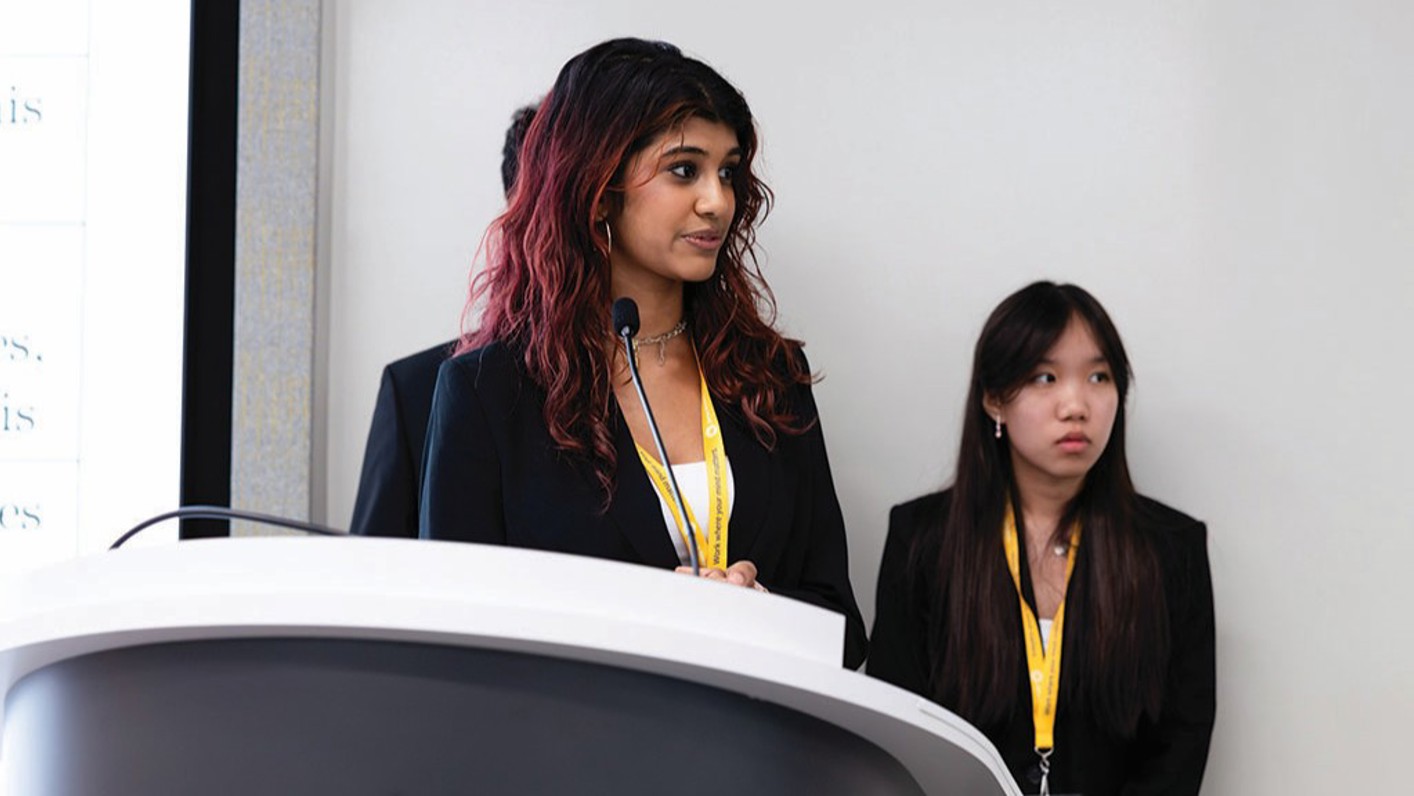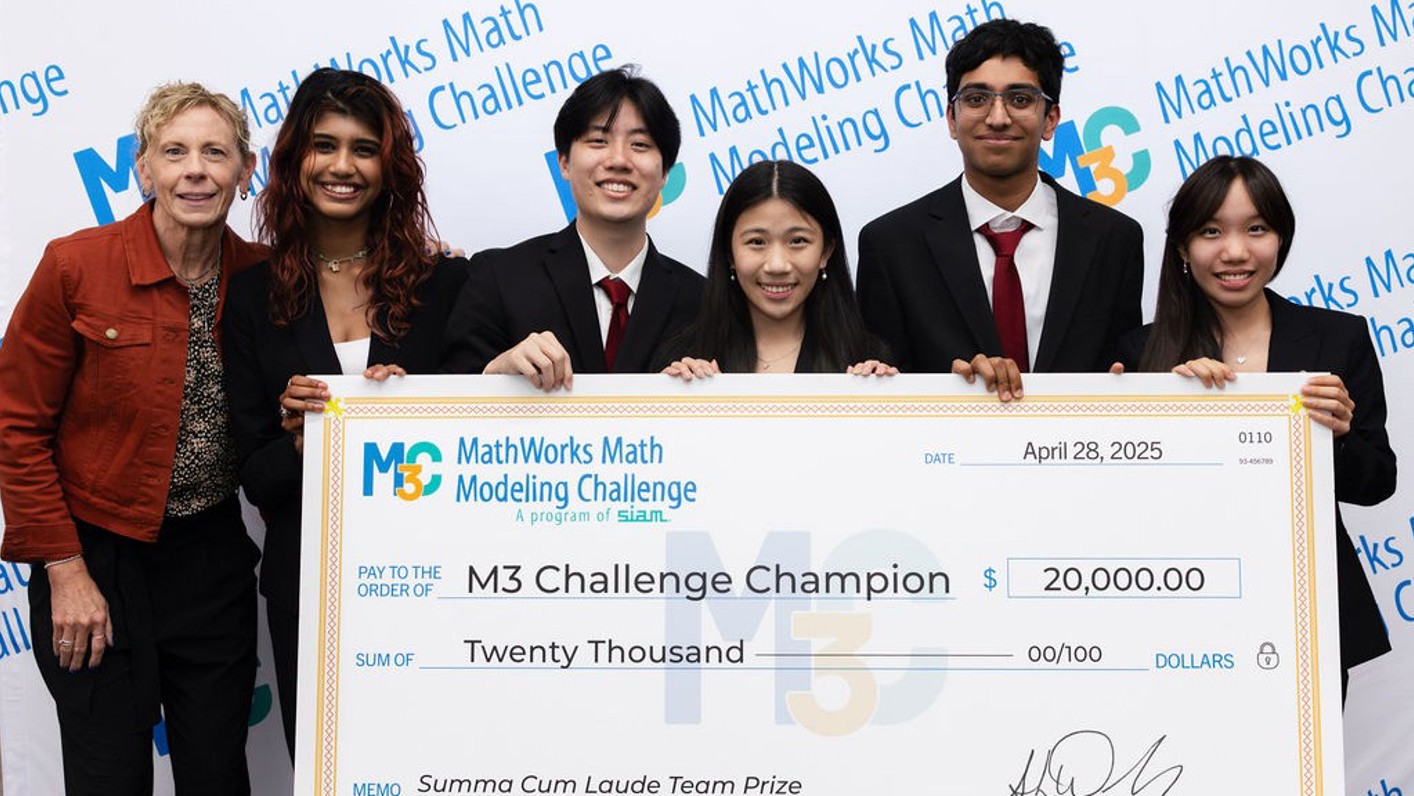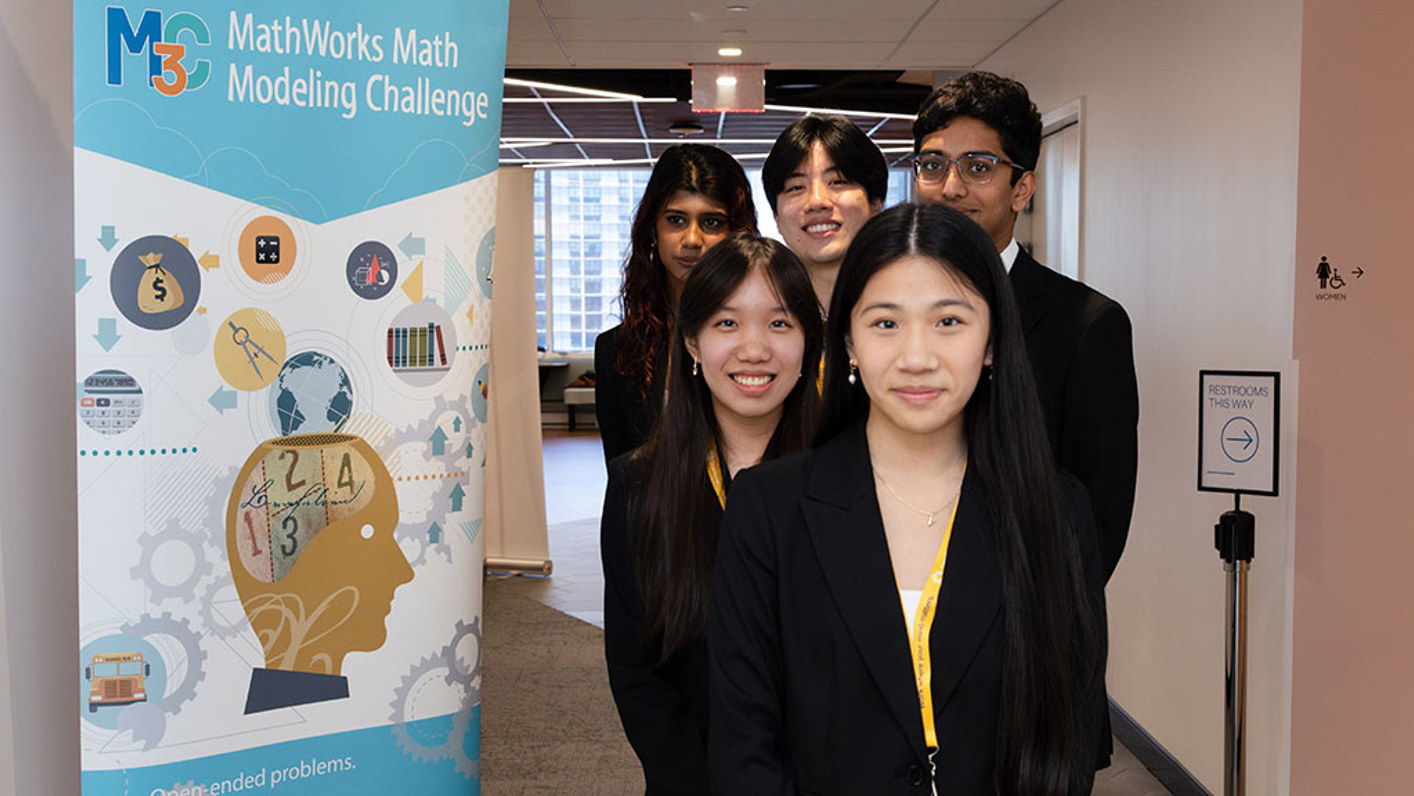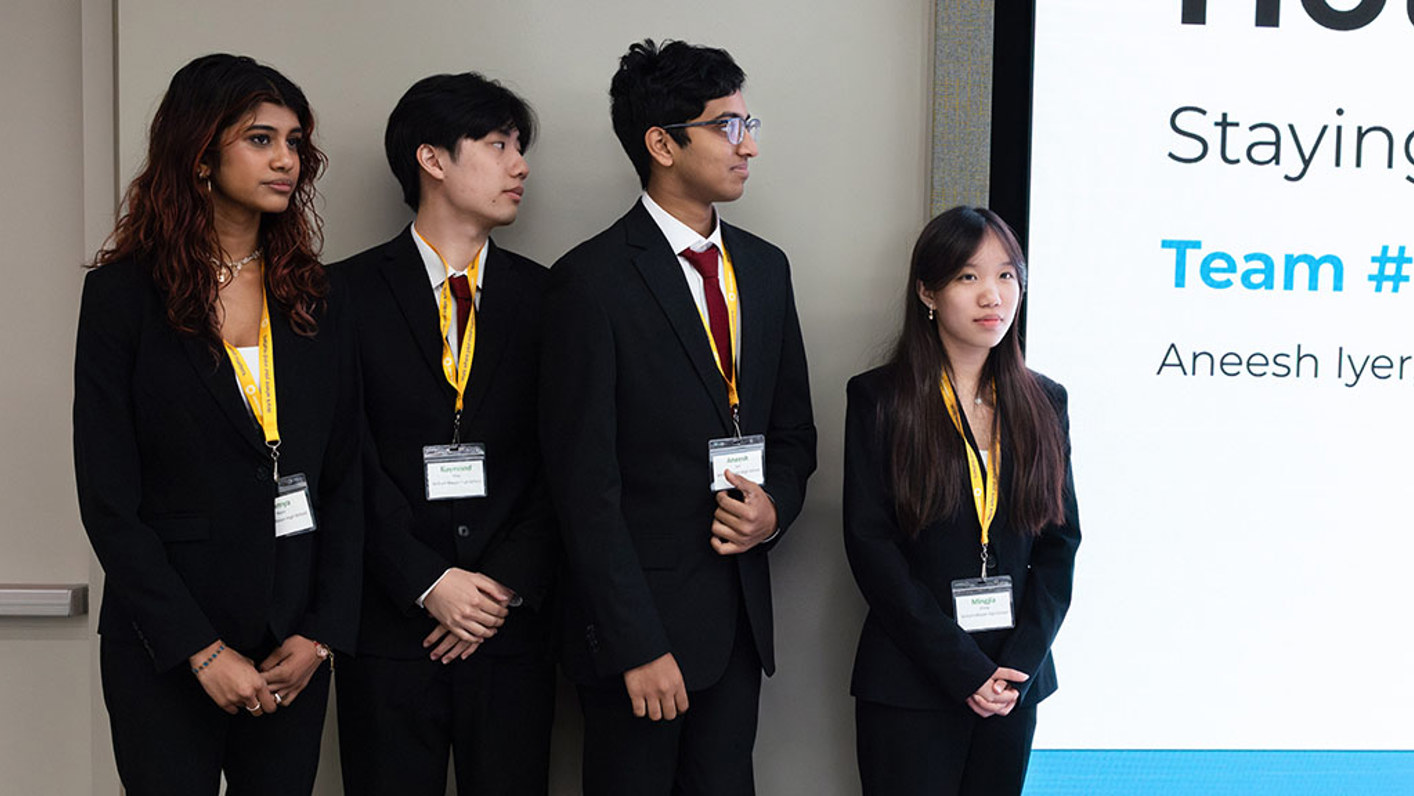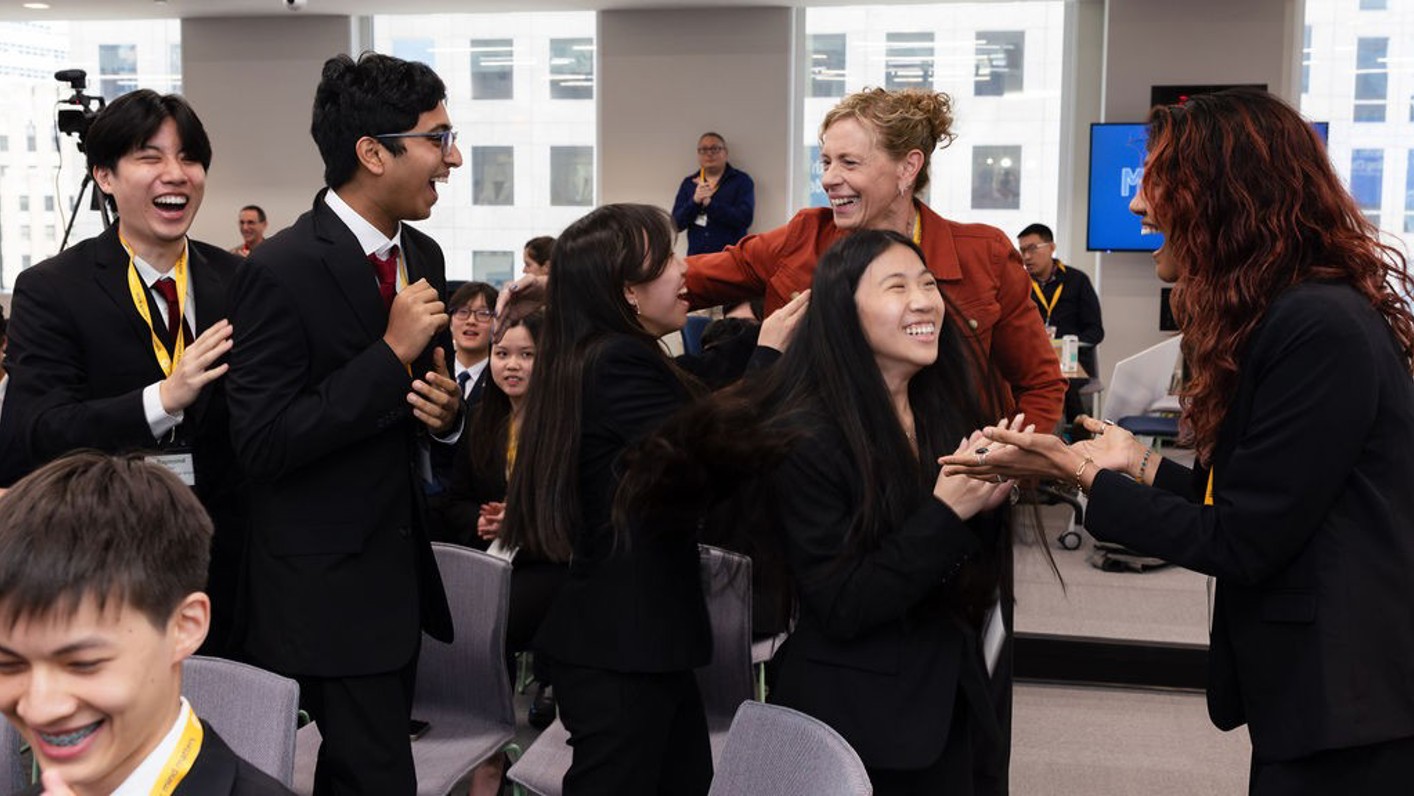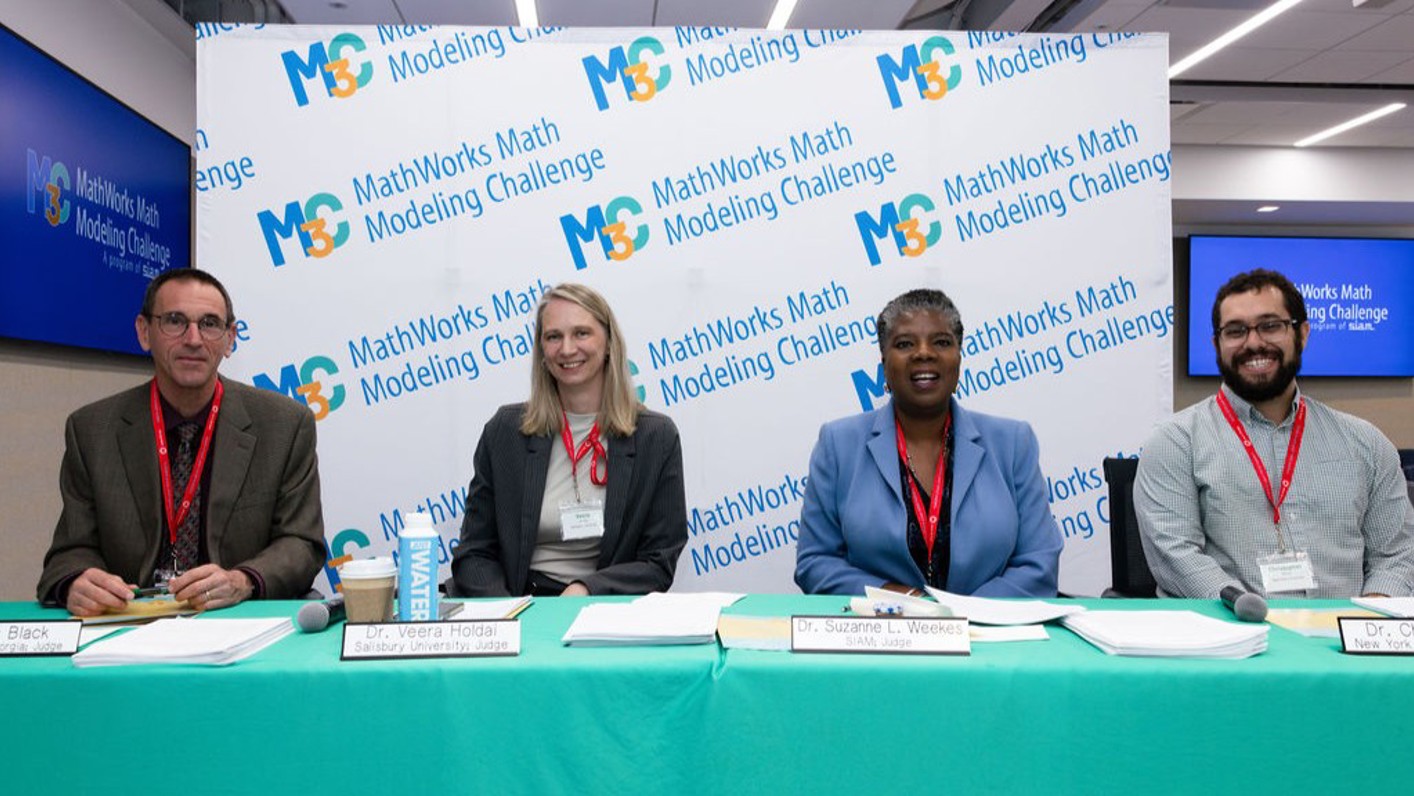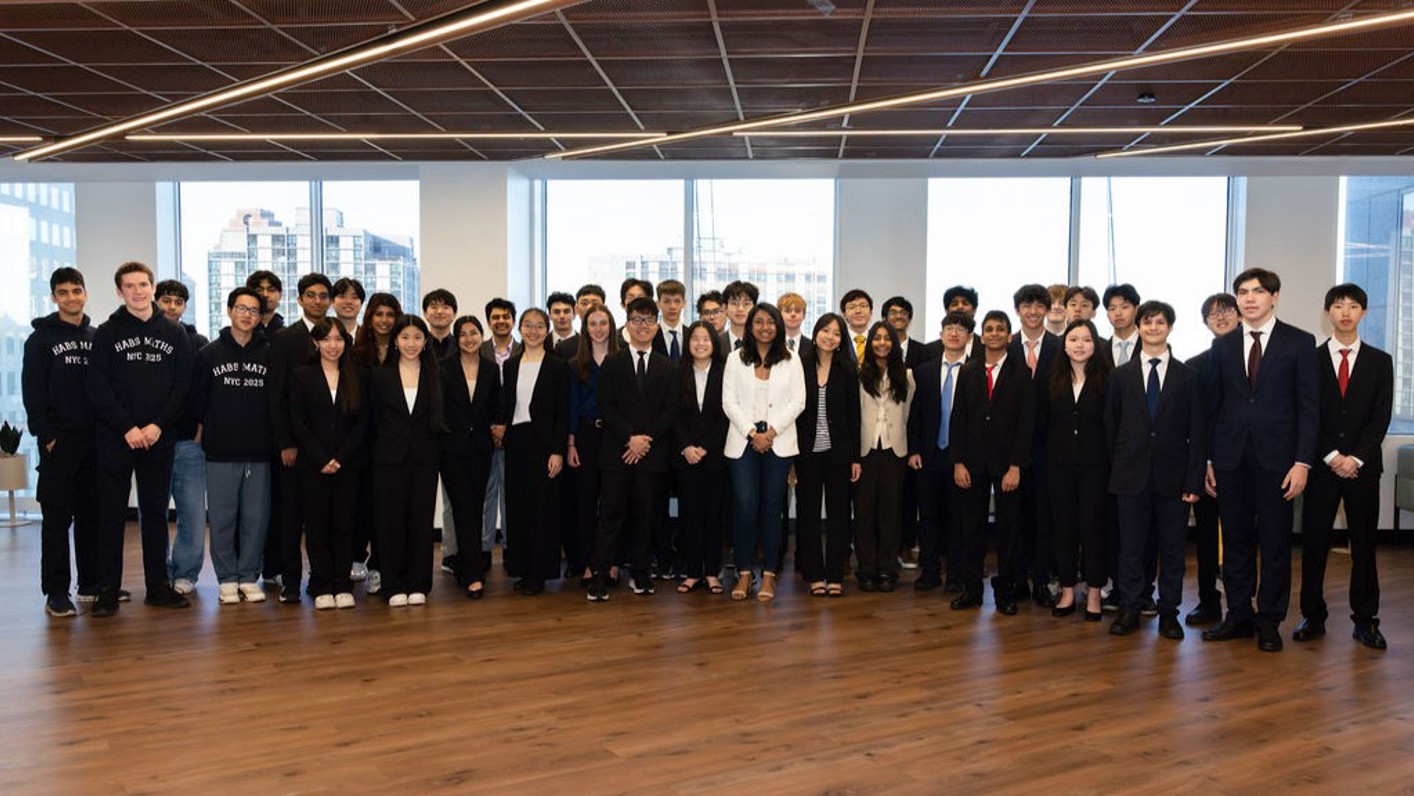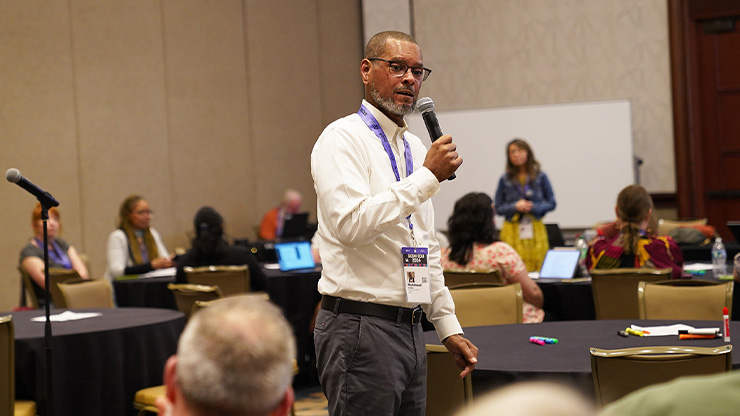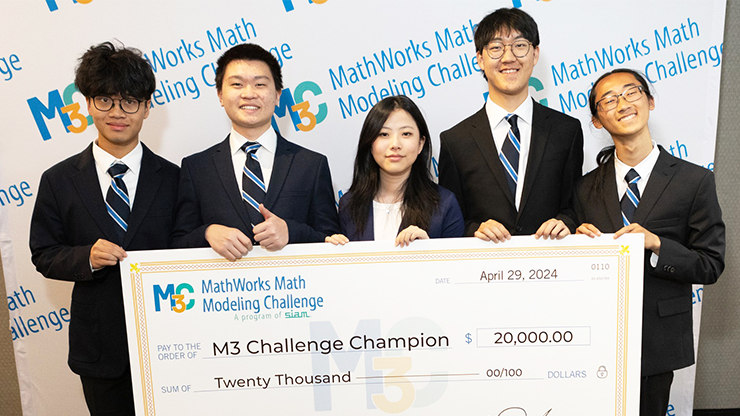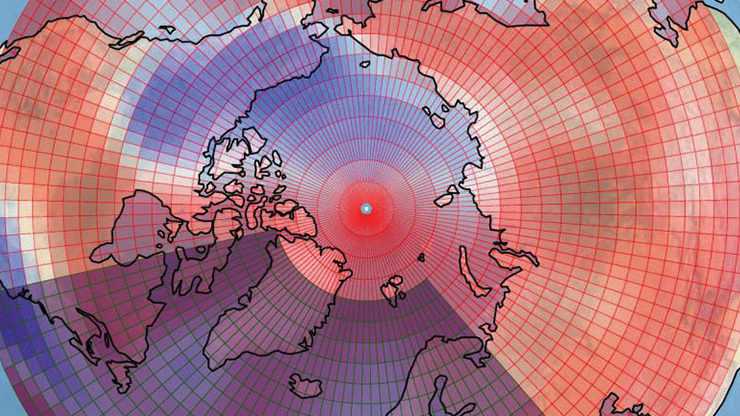Ohio High Schoolers Awarded First Prize for Models of Heat Waves and Climate-driven Power Outages
SIAM’s M3 Challenge 2025 Explores Residential Temperature Trends
2024 was the Earth’s warmest year on record, with global temperatures that exceeded the preindustrial average by 2.63 degrees Fahrenheit [1]. As temperatures around the world continue to climb in response to climate change, humanity must contend with a variety of troubling new weather phenomena — from melting polar ice and rising sea levels to droughts, catastrophic storms, and declining biodiversity.
One particularly dangerous consequence of global warming is the heightened incidence of heat waves: periods of dangerously hot weather that last for multiple days [4]. For more than 60 years, the frequency, duration, and intensity of U.S. heat waves has steadily increased [3]. These episodes disrupt the livelihoods and wellbeing of communities by overburdening healthcare organizations, emergency services, and energy providers — the latter of which leads to widespread power outages as the electrical grid struggles to accommodate the energy demands of air conditioning systems and other cooling measures [2]. Without electricity, homes fail to stay cool and critical infrastructure—businesses, transportation networks, hospitals, etc.—struggle to maintain operation. Such detrimental outcomes are exacerbated in urban areas in part due to the urban heat island effect [4].
Given the extensive societal repercussions of heat waves, this year’s MathWorks Math Modeling Challenge (M3 Challenge) focused on rising temperatures and energy usage during major heat events. M3 Challenge, a program of SIAM with MathWorks as its title sponsor, is an annual internet-based mathematical modeling competition for 11th and 12th grade students in the U.S. and sixth form students in England and Wales. There are no registration fees, and participating teams of three to five individuals vie for over $100,000 in scholarship funds. During “Challenge Weekend,” the teams download the real-world Challenge problem and have 14 consecutive hours to address the prompt with math modeling and produce a 20-page report that justifies their findings. 120 Ph.D.-level applied mathematicians then evaluate the papers during a triple-blind judging process, ultimately selecting nine finalist teams. On April 28, the 2025 finalists traveled to New York City and presented their solutions to a panel of judges at Jane Street, a quantitative trading firm.
“Nearly 800 teams submitted completed papers for review this year,” SIAM chief executive officer Suzanne Weekes said during her remarks at the Final Event in New York City. “The papers of the teams in this room were read by between 15 and 18 professional mathematicians and subject to intense and sometimes heated evaluations.”
Jen Gorman of Lake Superior State University, Chris Musco of New York University (an M3 Challenge 2008 finalist himself), and Neil Nicholson of the University of Notre Dame—all members of the M3 Challenge Development Committee—authored this year’s problem on heat waves. “We felt that the topic was both timely from an environmental point of view and impactful from a social point of view,” Nicholson said. “We were seeing heat-related stories more and more in the national news, and those were often accompanied by social impacts. I really like how this question had a quantitative model and a broad social science modeling question.”
The 2025 problem statement involved three components. First, participants were asked to develop and test a model to predict the indoor temperature of any non-air-conditioned dwelling over a 24-hour period in Memphis, Tenn., or Birmingham, England. They next had to create a model to estimate the peak demand for their city’s power grid during the summer months in both 2025 and 2045. Finally, teams generated and justified a vulnerability score for multiple neighborhoods to help policymakers equitably allocate resources and minimize the effects of a heat wave and/or power grid failure.
“Climate change presents complex, data-rich challenges that are deeply interdisciplinary, making it an ideal topic for mathematical modeling,” said assistant professor Yuki Miura of New York University’s Tandon School of Engineering, who spoke at the Final Event. “Forecasting atmospheric phenomena requires very complex models with a lot of computation effort, and modeling socioeconomic impacts that are triggered by extreme weather requires complex mathematical models. Anticipating these risks is essential to safeguard lives and build infrastructure that can withstand a changing climate.”
This year’s first-place team hailed from Mason High School in Mason, Ohio, and included Aneesh Iyer, Ramya Rajan, Raymond Shao, Vivian Tang, and Mingjia Zhang. To address the initial part of the Challenge problem, the group constructed a physical differential equation model—comprised of both a sinusoidal and quadratic model—to predict the indoor temperature of a non-air-conditioned home in Memphis. “We developed a sinusoidal model to represent hourly temperature changes during a heat wave day, and a quadratic model to estimate solar radiation throughout the same period,” Zhang said. “We then applied both models in a differential equation that accounts for these hourly temperature changes from solar radiation and heat transfer through exterior walls, along with the level of external shade, the geometric properties of the dwelling, and the material properties of the dwelling.”
After testing their model with input parameters from provided datasets, the group concluded that shade coverage has a much larger impact on indoor temperature than wall insulation. “This highlights the need for Memphis to invest in more passive cooling measures, such as trees and other shade-producing objects, rather than investing directly in improving the walls of the individual home,” Iyer said. “We also found that indoor temperatures peaked after exterior ones, which explains the real-world phenomenon of evening energy consumption being the greatest.”
To predict the strain on Memphis’ power grid now and in the future, the Ohio students defined peak demand in two ways: peak hourly load (in megawatts) and total energy consumption during the peak summer month (in kilowatt-hours). The team selected maximum annual temperature and annual population as key predictors, then ran a multiple linear regression in R. “Multiple linear regressions allow the incorporation of external predictors and capture their respective long-term trends, which are important to capture demand’s demographic- and climate-based trends,” Shao said. “They are also transparent in that they clearly show the effects of each predictor on the dependent variable, making our model easily interpretable to stakeholders in city planning or utilities.”
The students used population projections, maximum annual peak temperature, and forecasted temperatures from five Shared Socioeconomic Pathways (SSPs) emission scenarios to yield their demand estimates for 2025 and 2045. They reported that this year, Memphis power grids should be prepared to transmit 3,433.70 megawatts of power at any moment and anticipate roughly 887.50 million kilowatt-hours of total energy consumption in the height of the summer. In 2045, the grids can expect to transmit up to 3,563.07 megawatts of power and will see approximately 764.80 million kilowatt-hours of total energy consumption in the most demanding summer month.
Finally, the Mason team employed multiple linear regression to model the relationship between common heat wave vulnerability factors and the expected annual loss of several Memphis neighborhoods. They utilized backward variable selection to identify four important predictors of vulnerability: proportion of households with elderly individuals, proportion of households with children, population, and number of residents who walk or take public transit to work. Using the regression coefficients, the students combined, normalized, and scaled the predictors to generate a vulnerability score for each neighborhood.
“Our key takeaway was that vulnerability to heat waves is not evenly distributed across neighborhoods,” Rajan said. “Factors like age demographics, transit usage, and access to shade significantly affect a community’s ability to withstand extreme heat events.” The students proposed several mitigative recommendations—including the installation of cooling centers in public buildings, shade structures at public transit stops, and tax incentives or rebates for homeowners who invest in shade solutions or passive cooling features—to alleviate the burden for people in vulnerable neighborhoods.
After an impressive presentation in New York City, the Ohio students took home the top award of $20,000. “There was a lot to like about the Mason High School solution,” Musco, who served as a judge in New York City, said. “Like many of the top teams, their paper stood out for consistent and in-depth modeling for all three questions. Another thing that stood out was the incorporation of SSPs scenarios, which are widely used in climate risk analysis; Mason was one of the only teams that effectively used this framework.”
The 2025 event marked the 20th anniversary of M3 Challenge, which first took place in 2006. In addition to the standard team prizes for the top six solution papers, the program has since grown to include monetary awards for technical computing; outstanding communication of results; and title 1 schools that develop solutions with passion, resourcefulness, and knowledge. “This important program continues to inspire young people to pursue education and careers in STEM fields,” Karen Bliss, Senior Manager of Education and Outreach at SIAM, said. “Roughly 65,000 participants have collectively leveraged their math skills to tackle the biggest concerns facing our global communities, earning more than two million dollars in scholarship prizes. Participants also gain valuable skills that translate nicely to the workforce, including teamwork and the ability to communicate complex ideas in a straightforward fashion.”
Colleen Everett—coach of the Mason High School team—appreciates M3 Challenge for allowing students to hone their mathematical modeling skills outside of the controlled classroom environment. “Modeling is what makes math feel real,” she said. “It’s how students take what they’ve learned in class and actually use it to make sense of real-world problems like climate change, the economy, or how to plan things efficiently. M3 Challenge gives them a chance to tackle problems that don’t have clear-cut answers, kind of like what they’d face in careers in STEM, data science, economics, or public policy.”
As the Mason students eagerly look towards college programs in mathematics, economics, engineering, and related fields, they intend to apply their newfound problem-solving and modeling competencies in higher education settings and eventually the workforce. “Participating in M3 Challenge has changed the way we approach problem solving,” Tang said. “It taught us how to be comfortable with uncertainty and how to make decisions when the data is messy, the timeline is short, and there is no clear answer. It also showed us the value of collaboration under pressure and how to translate technical thinking into real-world impact.”
Mason High School’s winning solution paper is available online, as is their final presentation.
References
[1] Bateman, J. (2025, January 10). 2024 was the world’s warmest year on record. National Oceanic and Atmospheric Administration. Retrieved from https://www.noaa.gov/news/2024-was-worlds-warmest-year-on-record.
[2] Climate Matters. (2024, April 24). Weather-related power outages rising. Climate Central. Retrieved from https://www.climatecentral.org/climate-matters/weather-related-power-outages-rising.
[3] U.S. Environmental Protection Agency. (2025, April 18). Climate change indicators: Heat waves. Retrieved from https://www.epa.gov/climate-indicators/climate-change-indicators-heat-waves.
[4] World Health Organization: Health Topics. (2025). Heatwaves. World Health Organization. Retrieved from https://www.who.int/health-topics/heatwaves.
About the Author
Lina Sorg
Managing editor, SIAM News
Lina Sorg is the managing editor of SIAM News.

Stay Up-to-Date with Email Alerts
Sign up for our monthly newsletter and emails about other topics of your choosing.




